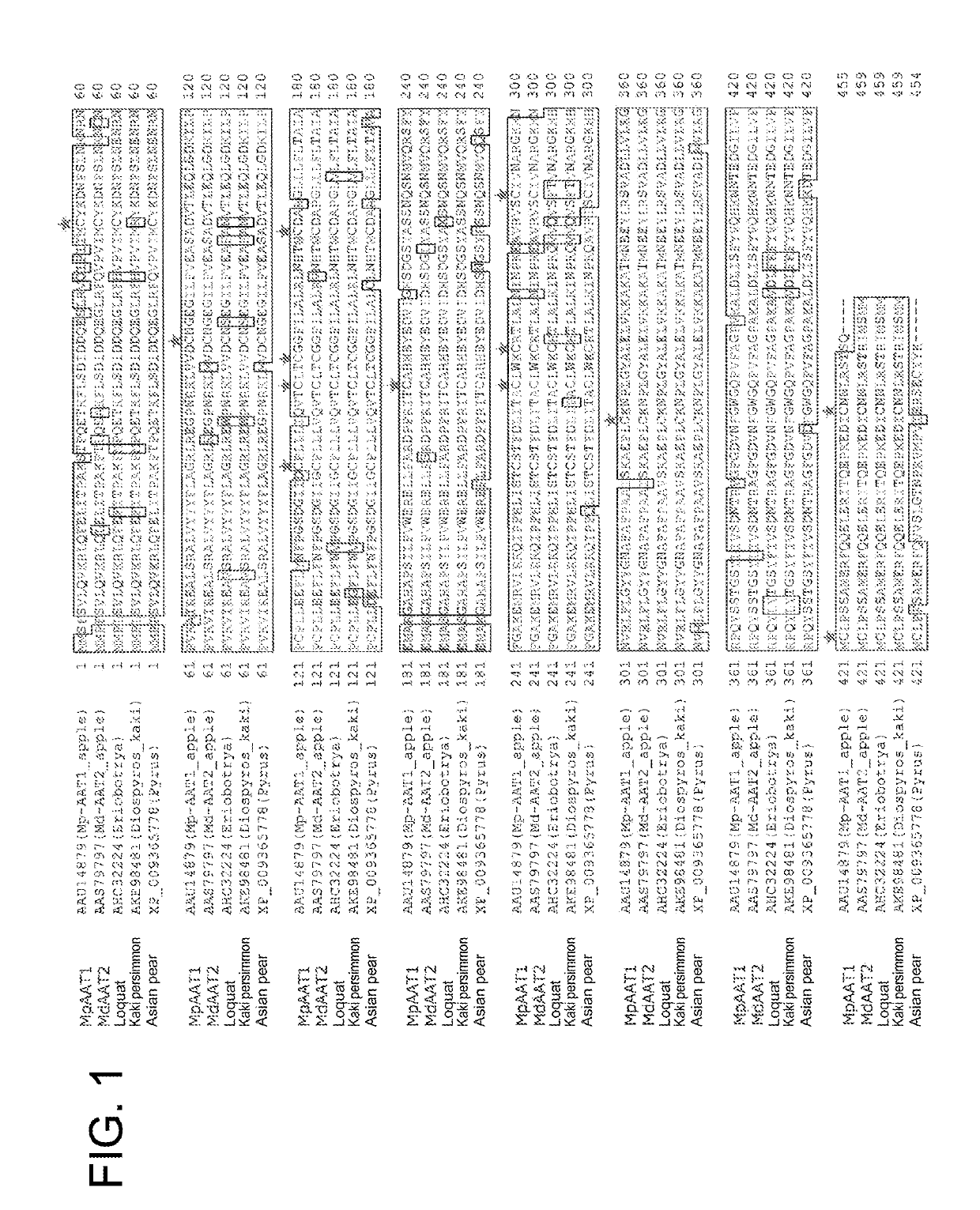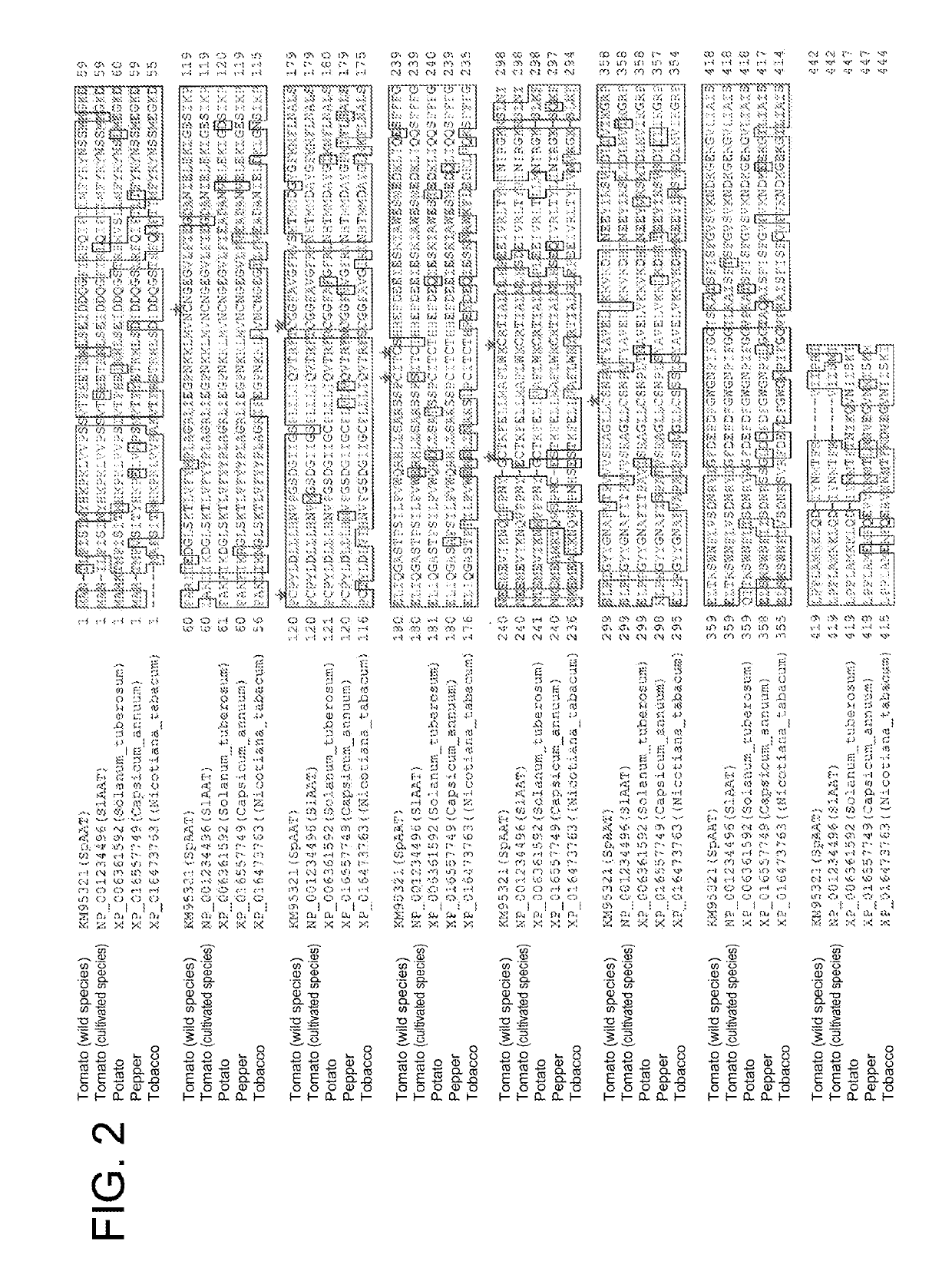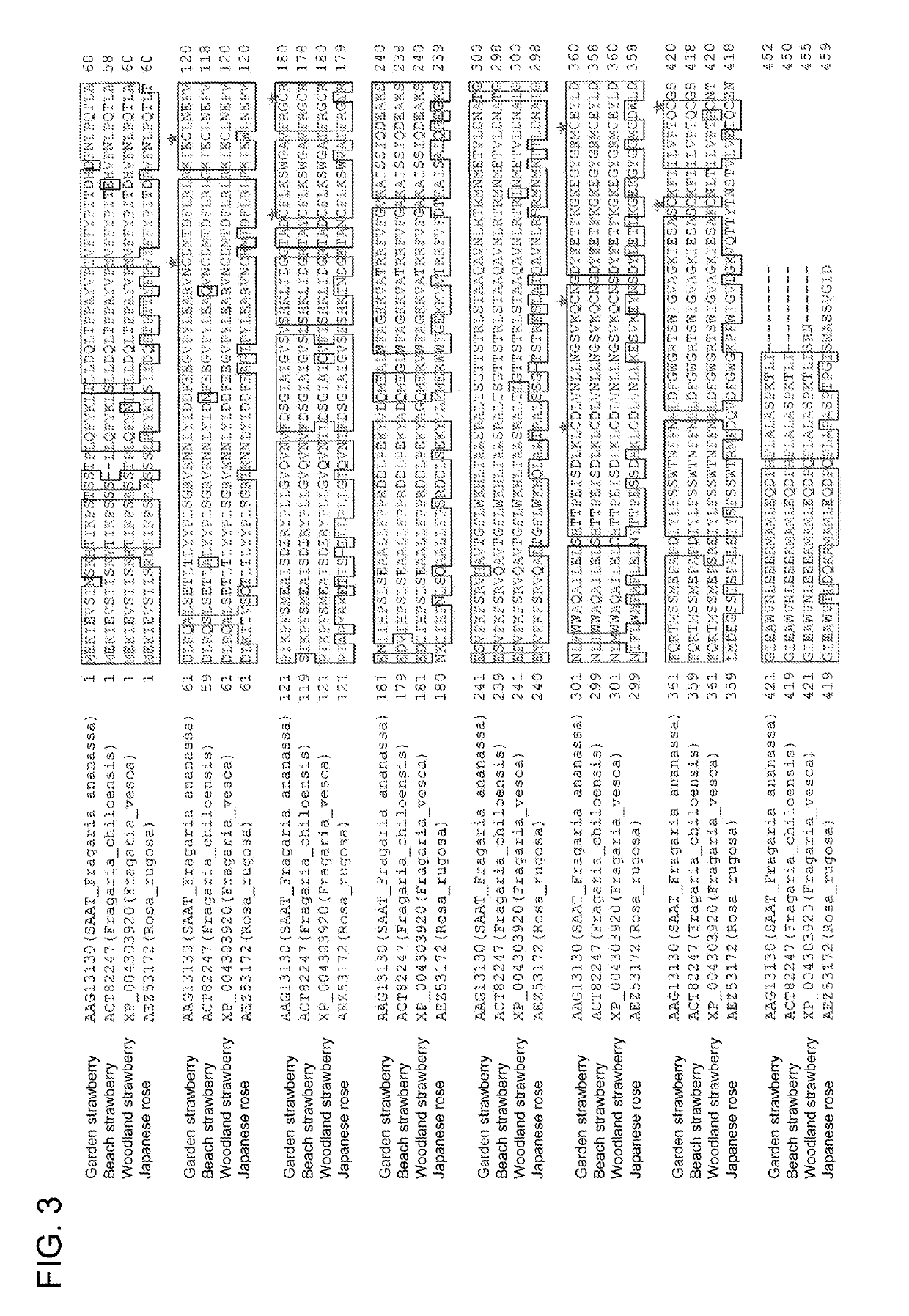Method for producing mutant enzyme, and mutant alcohol acyltransferase
- Summary
- Abstract
- Description
- Claims
- Application Information
AI Technical Summary
Benefits of technology
Problems solved by technology
Method used
Image
Examples
reference example 1
e AAT (MpAAT1) Gene Expression Plasmids pAAT012, pAAT115 and pAAT116
[0168]3 types of plasmids for the expression of the apple AAT (MpAAT1) gene were prepared.
[0169]The plasmid pAAT012 contains a gene encoding wild-type apple AAT (SEQ ID NO: 1).
[0170]The plasmid pAAT115 contains a gene encoding engineered apple AAT derived from the wild-type apple AAT by the substitution of an amino acid methionine at position 2 by valine.
[0171]The plasmid pAAT116 contains a gene encoding engineered apple AAT (SEQ ID NO: 2) derived from the wild-type apple AAT by the substitution of an amino acid methionine at position 2 by lysine.
[0172]First, the wild-type apple AAT gene (SEQ ID NO: 14) optimized for E. coli codons was synthesized (consigned to DNA2.0). The AAT gene was inserted to an expression vector (pJexpress404). The resulting vector was designated as pAAT012.
[0173]The AAT gene was transferred from the expression vector (pJexpress404) having T7 promoter to an expression vector (pTrc99A) having ...
example 1
n of Highly Active Apple AAT
[0181](1) Preparation of Recombinant Expressing Mutant in which Cysteine Residue was Substituted by Alanine Residue
[0182]The protein encoded by the apple AAT gene in the plasmid pAAT116 prepared in Reference Example 1 has 15 cysteine residues. 15 plasmids in which each cysteine was substituted by alanine was synthesized by consignment (GenScript Biotech Corp.) (Table 2).
TABLE 2Position of substitutedPlasmid namecysteine residueCodonpAAT116—CTGpAAT116C48APosition 48GCGpAAT116C95APosition 95GCGpAAT116C122APosition 122GCGpAAT116C141APosition 141GCGpAAT116C150APosition 150GCGpAAT116C153APosition 153GCGpAAT116C167APosition 167GCGpAAT116C210APosition 210GCGpAAT116C261APosition 261GCGpAAT116C270APosition 270GCGpAAT116C274APosition 274GCGpAAT116C291APosition 291GCGpAAT116C326APosition 326GCGpAAT116C422APosition 422GCGpAAT116C447APosition 447GCG
[0183]An E. coli JM109 strain was transformed with each of 16 plasmids shown in “Table 2”. The E. coli transformant was i...
example 2
on and Activity Evaluation of 6-Cysteine Substitution Quadruple Mutant
[0214]The AAT gene encoding a mutant in which all the cysteine residues 48, 150, 167, 270, 274 and 447 of AAT were substituted by alanine, and 4 mutations A64V, K117Q, V248A and Q363K were present was synthesized by consignment (GenScript Biotech Corp.) and inserted to a vector pTrc99A to obtain a plasmid pAAT025. An E. coli JM109 strain was transformed with the plasmid pAAT025, and the AAT activity of a cell homogenate of the E. coli transformant was measured by the method described in Example 1.
[0215]The results are shown in FIG. 5. The 6-cysteine substitution quadruple mutant exhibited activity per recombinant of approximately 2.8 times the activity of the reference form (quadruple mutant) expressed from pAAT021.
PUM
| Property | Measurement | Unit |
|---|---|---|
| Fraction | aaaaa | aaaaa |
Abstract
Description
Claims
Application Information
 Login to View More
Login to View More - R&D
- Intellectual Property
- Life Sciences
- Materials
- Tech Scout
- Unparalleled Data Quality
- Higher Quality Content
- 60% Fewer Hallucinations
Browse by: Latest US Patents, China's latest patents, Technical Efficacy Thesaurus, Application Domain, Technology Topic, Popular Technical Reports.
© 2025 PatSnap. All rights reserved.Legal|Privacy policy|Modern Slavery Act Transparency Statement|Sitemap|About US| Contact US: help@patsnap.com



